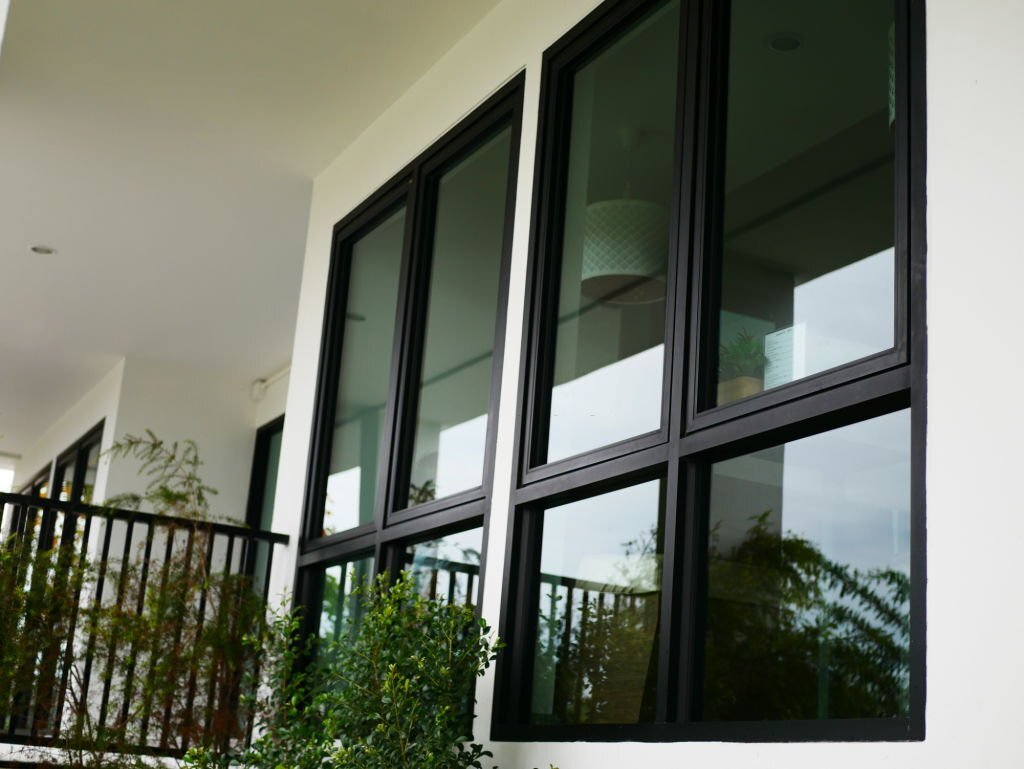Just How Residential Home Window Tinting Improves Your Home's Power Effectiveness
Residential window tinting offers a compelling remedy for home owners looking for to improve energy effectiveness within their living spaces. By using specialized films to windows, it effectively lowers warmth transfer, consequently stabilizing interior temperature levels and reducing the need for extreme home heating or air conditioning.
Comprehending Home Window Tinting
Understanding window tinting is crucial for property owners seeking to boost both convenience and power performance in their living areas. Residential Window Tint. Window tinting includes the application of a slim film to the interior or exterior surface area of glass home windows. This movie can dramatically regulate the quantity of sunlight and warmth that gets in a home, thus affecting indoor environment conditions
There are various kinds of window tinting movies readily available, each with distinct properties. For instance, dyed films absorb solar power, while reflective films disperse it far from the glass surface. Ceramic films supply an equilibrium of exposure and heat rejection, making them a preferred selection amongst property owners. The effectiveness of window tinting is usually gauged by its Visible Light Transmission (VLT) percent, which shows just how much light can travel through the film.
Benefits of Energy Efficiency
Home window tinting not just enhances aesthetics but also plays a considerable function in enhancing energy performance within residential areas. By lowering warmth transfer via windows, colored films develop a much more steady indoor environment, which can cause considerable reductions in energy usage for heating & cooling. This power effectiveness translates right into reduced energy costs, giving house owners with considerable long-lasting savings.

Additionally, window tinting improves the convenience of living spaces. By lessening glare and blocking dangerous UV rays, tinted home windows produce an even more positive setting, which can result in boosted well-being for residents. The protection against UV rays additionally helps protect furnishings and floor covering from fading, contributing to the longevity of family items.
How Tinting Functions
Tinting movies operate via a combination of innovative materials and innovations designed to regulate the amount of solar power entering a home. Primarily composed of polyester, these films typically incorporate metal or ceramic particles that mirror and absorb heat. This double ability allows them to considerably lower the infiltration of ultraviolet (UV) rays and infrared radiation while permitting visible light to travel through.
The effectiveness of home window tinting is determined by its solar heat gain coefficient (SHGC), which suggests exactly how much solar energy is sent through the home window. Lower SHGC values are better as they represent better warm denial. Additionally, window tints can feature a range of shades, enabling home owners to personalize their visual choices while improving energy effectiveness.
Additionally, these movies act as an obstacle, preventing heat loss during colder months by showing interior warmth back into the space. This thermal insulation result complements the air conditioning advantages obtained throughout warmer months, adding to a well balanced indoor climate year-round. By handling solar power successfully, property window tinting not only boosts comfort but additionally plays a crucial function in lowering power intake and reducing utility costs.
Picking the Right Color

There are different kinds of window movies readily available, including dyed, metalized, and ceramic. Ceramic movies supply superb warmth control without jeopardizing exposure and are highly resilient, making them a prominent option.
Visible light transmission (VLT) is one more essential aspect, as it suggests the amount of all-natural light that can pass through the colored glass. Homeowners ought to choose a color with a VLT that complements their lighting preferences while still supplying adequate glare decrease.
Furthermore, evaluating the solar warm gain coefficient (SHGC) can assist figure out you can try this out exactly how well a color can block heat from sunshine. A reduced SHGC suggests much better warm control, eventually improving energy performance.
Setup and Maintenance Tips
Proper installment and upkeep are crucial components in optimizing the benefits of residential window tinting. To attain ideal results, it is suggested to employ a qualified specialist for installment. This makes sure that the tint is applied correctly, preventing air bubbles, wrinkles, or imbalance that might jeopardize performance. Experts likewise make use of specialized methods and devices, which can improve the resilience and effectiveness of the color.
Complying with installment, maintenance is vital to prolong the life of the home window movie. It is advised to wait a minimum of one month prior to cleaning the colored home windows to allow the glue to treat completely. When cleansing, utilize a soft fabric and a mild, ammonia-free cleaner to prevent damaging the film. Prevent unpleasant materials that could scrape the surface area.
Attending to these concerns immediately can protect against additional damages and preserve power efficiency. By sticking to these installment and upkeep suggestions, home owners can ensure their window tinting proceeds to supply considerable energy savings and comfort for years to come.
Conclusion
In conclusion, household window tinting functions as a reliable service for improving energy performance within homes. By minimizing heat transfer and obstructing harmful UV rays, home window films add to reduce power intake and enhanced interior comfort. The selection of proper tinting products, along with correct setup and upkeep, additionally maximizes these benefits. Ultimately, home window tinting stands for a sustainable financial investment that not only lowers utility bills however also promotes a comfortable living atmosphere throughout the year.
Window tinting involves the application of a continue reading this thin movie to the inside or outside surface area of glass windows. By minimizing heat transfer via home windows, tinted films produce a much more steady interior environment, which can lead to considerable decreases in power consumption for heating and air conditioning.The performance of home window tinting is measured by its solar heat gain coefficient (SHGC), which suggests exactly how much solar power is sent through the window. By handling solar energy properly, domestic window tinting not only improves convenience however also plays an essential duty in decreasing power intake and reducing energy expenses.
By lowering heat transfer and blocking hazardous UV rays, home window films contribute to lower energy consumption and improved interior convenience.